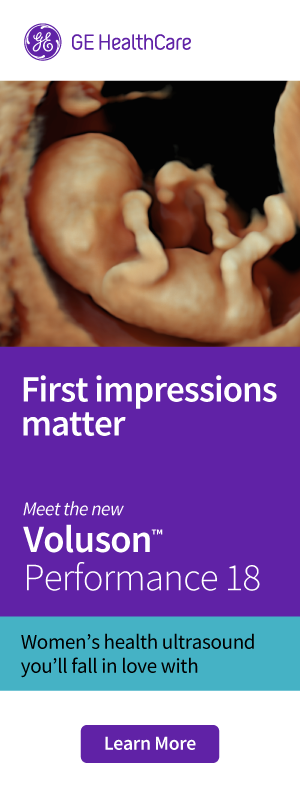The new Certificate of Women’s Health and the revised curriculum for the Diploma and Advanced Diploma were introduced two years ago. Why were the new qualifications needed and what has happened since?
In 2007, RANZCOG commenced a much-needed review of the training and assessment requirements for the College’s Diploma (DRANZCOG). Unlike the numbers entering midwifery, the number of doctors practising GP obstetrics was entering a level of unsustainability. The College was facing an exodus of retiring GPs who had practised obstetrics for decades who were not being replaced by a new generation coming through the Diploma training programs. This, combined with the closure of over 200 maternity units and an increasing push by midwives for independent practice, resulted in a drop of GPs practising obstetrics from 2200 to 1815 over a ten-year period.1
At the time, there were few incentives for medical students and doctors to take up GP obstetrics in future practice. Medical students were experiencing either minimal exposure to the labour ward in their undergraduate clinical training or increased resistance from midwifery staff to the students’ presence in the labour ward. In addition, once doctors had entered a formalised GP training program, a return to hospital-based training resulted in the corresponding decrease in remuneration. These disincentives led to an overall drop in DRANZCOG trainee numbers.
Previously, doctors had the option to undertake either the DRANZCOG or the DRANZCOG Advanced. The DRANZCOG was tailored for GPs wishing to provide a high standard of routine antenatal care and perform low-risk vaginal deliveries. The DRANZCOG Advanced targeted GPs who would be providing women in rural and remote parts of Australia with access to a skilled clinician able to perform emergency caesarean sections. Other skills expected of doctors with the DRANZCOG Advanced at the time included the ability to perform an open appendectomy and laparoscopically manage ectopic pregnancies. The forced closure of many urban obstetric units meant DRANZCOG holders were not using the intrapartum component of their qualification, leading to the introduction of alternative programs that focused primarily on the delivery of office-based care.
Between 2007 and 2011, every aspect of the former Diploma training programs was reviewed and extensively debated in light of the healthcare needs of women in all areas of Australia. The Education and Assessment (EA) Subcommittee of the Conjoint Committee for the Diploma of Obstetrics and Gynaecology (CCDOG), a tripartite committee of RANZCOG, the Royal Australian College of General Practitioners (RACGP) and the Australian College of Rural and Remote Medicine (ACRRM), was responsible for the review. The feedback sought from all DRANZCOG stakeholders – including, training supervisors, heads of hospital O and G departments, area health services, consumer groups and doctors who had most recently been awarded the Diploma – directly informed the review process. While many of the fundamentals of obstetric care have remained essentially the same for the past two decades, it was evident from the review that the training program could more effectively equip Australian GPs with the necessary skills required to provide the highest level of care to women, not only in the urban GP practice, but also in rural and remote communities. Furthermore, the program had to adapt to the increasing breadth of knowledge that was emerging from new research and utilise the latest methods and technologies to most effectively support GP obstetricians in training.
To address the varying healthcare needs of women in Australia and the corresponding skills necessary for GPs in order to deliver that care, a three-tiered structure of qualifications was developed based on a ‘building-blocks’ principle. The Certificate of Women’s Health (CWH) and the revised DRANZCOG and DRANZCOG Advanced build upon each other in terms of both theoretical knowledge and clinical skills required, are facilitated by an extensive array of purpose-built online modules and are underpinned by a robust assessment regime.
The CWH is designed to be completed within the trainee’s place of practice, be that a GP clinic or hospital, and use the expertise of RANZCOG Fellows and Diplomates with whom the trainee has regular contact and who can act as appropriate mentors. Supported by dedicated online resources, the trainee is able to remain within their practice and complete a logbook and the workplace-based assessments of a number of skills-based procedures, assessed by the trainee’s mentor. A multiple-choice question written examination is also included in the suite of assessment tools. The inherent flexibility of the CWH program allows trainees two years to satisfactorily complete all the training and assessment requirements. The CWH is now widely considered appropriate for those doctors wishing to provide high-quality shared care.
The revised DRANZCOG builds on the knowledge and skills of the CWH, requiring trainees to undertake work in an obstetric unit so as to develop their low-risk intrapartum skills. The assessment regime for the DRANZCOG also consists of a number of workplace-based assessments of obstetric skills, as well as additional in-training requirements. The traditional multiple-choice question written and multi-station oral examinations remain in the revised program.
The revision of the DRANZCOG Advanced focused on its relevance to rural and remote GP practice. Previously, DRANZCOG Advanced trainees were required to develop their skills in performing laparoscopy as well as open appendectomy. The review demonstrated that few DRANZCOG Advanced holders were performing these procedures in their daily practice and, thus, finding it difficult to maintain competency. It was considered, and rightly so, unnecessary for a candidate who would do very few laparoscopic procedures to be then competent in the laparoscopic management of an ectopic pregnancy or have the ability to perform an open appendectomy. The revised DRANZCOG Advanced places a greater emphasis on the ability of the rural GP practitioner to perform procedures that are effective in stabilising the unwell patient. Completion of supplementary training courses, such as the Anatomy of Complications Workshop and the Managing Obstetric Emergencies and Trauma (MOET) course, although not mandatory, is strongly encouraged. Furthermore, as ultrasound has become increasingly affordable and readily available, the revised DRANZCOG Advanced training program now also includes an ultrasound component, enabling trainees to develop skills in performing early and focused ultrasound, allowing women to remain within their communities for these procedures.
The revised women’s health training programs for GPs have been in operation since August 2011, which begs the question – have the implemented changes led to a tangible difference in the number of doctors entering the training programs? Pleasingly, the answer is: yes. More than 100 trainees are currently undertaking the CWH, while DRANZCOG and DRANZCOG Advanced trainee figures have trebled. RANZCOG has gone from an organisation losing up to 150 Diploma holders each year to, now, having more than 2500 GP obstetricians practising with the DRANZCOG or DRANZCOG Advanced qualification. This is further encouraged by Practice Profile data demonstrating that more than 50 per cent of the GP obstetrician workforce is aged under 50 and over 90 per cent of respondents indicated their intention to continue with intrapartum care for the next five years.2 I believe we should be proud of what RANZCOG has achieved.
When faced with a declining number of procedural GPs, RANZCOG had two choices: it could have either stood by, as other colleges have done, and watched the demise of GP anesthetics and surgery, or do something about it. It chose the latter. We now have a flagship training program specifically tailored to the needs of GP practitioners; qualifications that offer flexibility and that are becoming the first choice for GPs wishing to provide the highest quality women’s healthcare. With the revised program and the additional support provided for trainees, we now have a situation where the future workforce needs of our profession, as well as those who seek our care, are being secured.
References
- Minutes of General Practice Obstetrics Advisory Committee (GPOAC)2005.
- Diplomates Practice Profile 2012. RANZCOG.






Leave a Reply